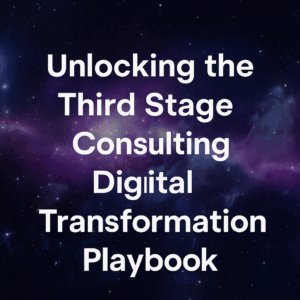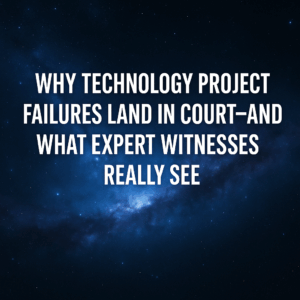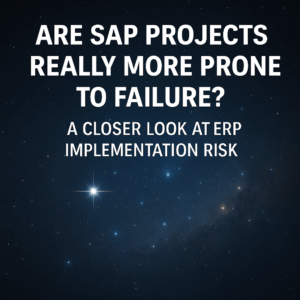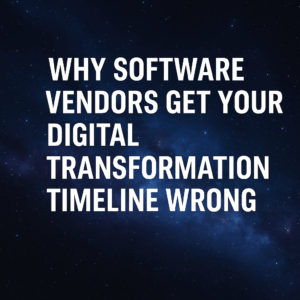We often see organizations get caught in analysis paralysis during their ERP and HCM software evaluation process. With so many options in the market, coupled with a lack of independent data on the strengths and weaknesses of these options, it’s easy to see how a project team can get stuck in the mud.
Unfortunately, common reference and evaluation tools such as Gartner’s Magic Quadrant and reports from other industry analysts are rarely both helpful and objective. If anything, we have seen these and other common evaluation tools confuse the ERP and HCM evaluation process more than they help.
Table of Contents
ToggleFlaws with Gartner’s Magic Quadrant and other ERP industry analyst reports
ERP and HCM teams understandably refer to things like Gartner’s Magic Quadrant and other industry analyst reports as part of their evaluation processes. The problem with this approach is that most industry analyst reports and magic quadrants are commissioned by ERP and HCM vendors.
Industry analyst firms are generally heavily subsidized and compensated by the ERP vendors. Software companies will often commission these third-party reports to highlight product strengths while glossing over any potential weaknesses. And with a seemingly unlimited number of possible of software comparisons and rankings within a plethora of industry niches, technologies, and geographies, it is easy for a vendor to commission a report that shows that their product is above all others in a very narrow and specific set of criteria.
This is just one way that third-party reference points can be misleading. This video explains how the enterprise software industry has created an entire system designed to drive bias and influence among potential customers:

In addition, there are a number of other common mistakes that evaluation teams fall into:
Over analysis of business requirements. Often too much time is spent defining a laundry list of hundreds or thousands of requirements. Many of these requirements either don’t support the core competitive advantages for the company evaluating software, and/or the stated needs are so basic that any ERP or HCM system can sufficiently handle them. The end result is often analysis paralysis.
Extensive Request for Information (RFI) processes. When you don’t know what ERP short-list you should be considering in the first place, an easy answer is to simply send requests for information (RFIs) to any vendor you can think of. One problem is that most organizations only have a small handful of ERP options that will truly meet their needs. Another problem is that ERP vendors are going to tell you what you want to hear by answering “yes” to most of your requirements, which is not helpful.
Extensive Request for Proposal (RFP) processes. Once you have your short-list to send RFPs to, the ERP RFP process is another pitfall to watch for. Like RFIs, evaluation teams often focus on the wrong things and vendors will respond with responses that the customer wants to see. As a result, this traditional part of the ERP and HCM evaluation process often ends up becoming a time-consuming and low-value input into the overall process.
Failure to consider the intangibles of potential ERP and HCM software. Another common problem is that organizations fail to consider the intangible components of the potential fit of an ERP or HCM system. These are things that can be hard to quantify or measure via a list of business requirements. For example, some of our clients will conduct a comparison of SAP S/4HANA vs. Oracle ERP Cloud. One is generally better for enabling standardization and structure (SAP), while the other is generally more flexible and suited for fast-changing organizations (Oracle). These and other intangibles can be important differentiators in the evaluation process.
Alternatives to an exhaustive ERP and HCM evaluation processes
Rather than sticking to evaluation processes that are ineffective, overly time consuming, and/or biased, more effective assessment tactics can be hugely beneficial. Simply put, it is important to focus on the most important evaluation criteria – both tangible and intangible.
This video provides more detail and examples of how you can create your own customized “magic quadrant” as part of your ERP and HCM evaluation:

In addition to the comparison framework outlined in this video, here are some other sources to help accelerate and focus your ERP and HCM evaluation approach:
- Vendor functionality databases can provide unbiased and quantitative ratings of the strengths and weaknesses of requirements that are most important to your business. For example, our consulting team licenses the most robust and complete industry database as part of our consulting services.
- Unbiased third-parties with experience across multiple platforms can help provide input.
- Independent ERP consultants such as our team at Third Stage can leverage our experience with thousands of ERP evaluations over the years.
Next steps in your ERP and HCM evaluation process
The software evaluation process is one of the most important steps in your digital transformation journey, but you don’t want to spend an excessive amount of time, money, resources, and momentum at this point. Each hour of time and dollar of money you can save during the process is another hour and dollar that you can redeploy to an effective implementation.
Feel free to contact me as you navigate the various ERP and HCM software options available to you. My team and I are happy to be an informal sounding board as you continue your journey!





